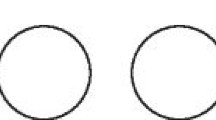Abstract
Design Systematic review.
Case selection This systematic review had a focused and structured research question in term of PICO (Population, Intervention, Comparison and Outcomes). Patients included within the study were those with undergoing primary root canal treatment on a permanent tooth. The intervention was obturation with gutta percha and a resin-based sealer in comparison to obturation with gutta percha and another sealer type. The primary outcome being measured was post-operative pain incidence and/or intensity. An additional, secondary outcome, aimed to assess analgesic intake following treatment.
Data analysis Data analysis was carried out by two independent reviewers using a specifically designed template which gave a concise summary of the study included within the review. The form allowed the following details to be recorded: whether a single operator completed treatment; pulpal status; irrigants used; sealer placement technique and type; obturation technique and quality; evaluation time; and outcome measures. An assessment was carried out of each study to ascertain the risk of bias which was categorised as low risk, having some areas of concerns or high risk.
Six studies were included within the quantitative analysis which involved analysis of post-operative pain experiences at specified intervals. Qualitative data analysis was completed using a digital software package which allowed comparable results to be combined.
Results The results from this systematic review demonstrated no significant difference in post-operative pain incidence between endodontic treatment using resin or non-resin sealers. While seven of the studies had high risk of overall bias, four were deemed low risk, and the majority of studies confirmed that there was no significant difference in the intensity of pain between the two groups. This review also confirmed that analgesic intake is not increased in patients where resin-based sealers are used when compared to non-resin sealers.
Conclusion There is no significant difference in post-operative pain when resin-based root canal sealers are used when compared to other root canal sealers. For both resin and non-resin sealers, analgesics use, pain incidence post-operatively and intensity of pain reduce after 24 hours.
This is a preview of subscription content, access via your institution
Access options
Subscribe to this journal
Receive 4 print issues and online access
$259.00 per year
only $64.75 per issue
Buy this article
- Purchase on Springer Link
- Instant access to full article PDF
Prices may be subject to local taxes which are calculated during checkout
Similar content being viewed by others
References
Siqueira J F Jr. Treatment of Endodontic Infections. London: Quintessence Publishing, 2011.
Mello F W, Miguel A F P, Ribeiro D M et al. The influence of apical extent of root canal obturation on endodontic therapy outcome: a systematic review. Clin Oral Investig 2019; 23: 2005-2019.
Zhang W, Peng B. Tissue reactions after subcutaneous and intraosseous implantation of iRoot SP, MTA and AH Plus. Dent Mater J 2015; 34: 774-780.
Ricucci D, Rôças I N, Alves F R, Loghin S, Siqueira J F Jr. Apically Extruded Sealers: Fate and Influence on Treatment Outcome. J Endod 2016; 42: 243-249.
Author information
Authors and Affiliations
Ethics declarations
The authors declare no conflicts of interest.
Rights and permissions
About this article
Cite this article
Carr, E., MacInnes, A. Do resin-based sealers increase post-operative pain following root-canal treatment?. Evid Based Dent 23, 114–115 (2022). https://doi.org/10.1038/s41432-022-0804-3
Received:
Accepted:
Published:
Issue Date:
DOI: https://doi.org/10.1038/s41432-022-0804-3



